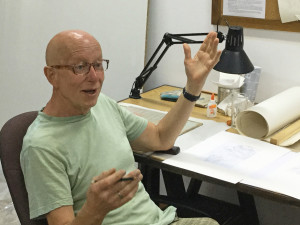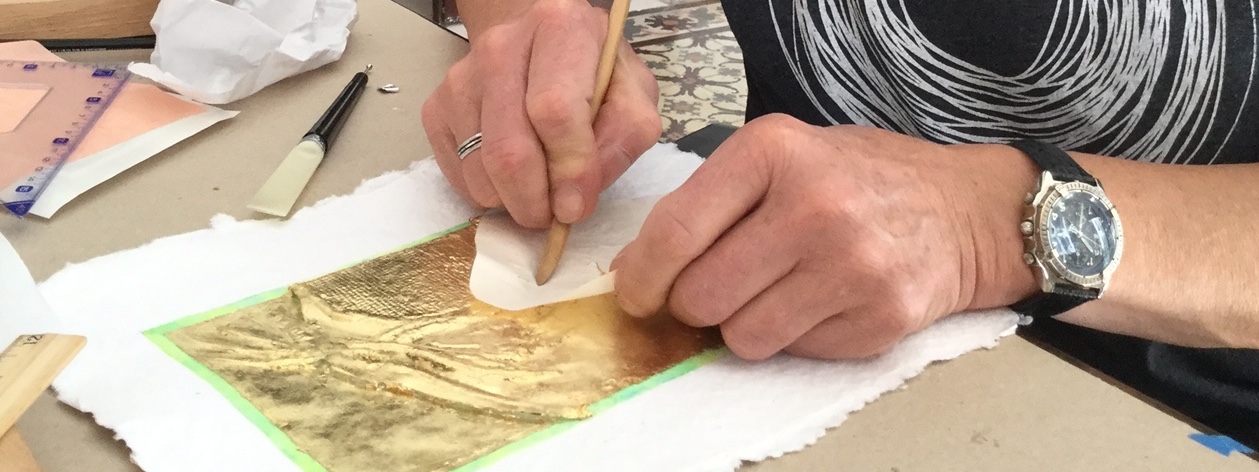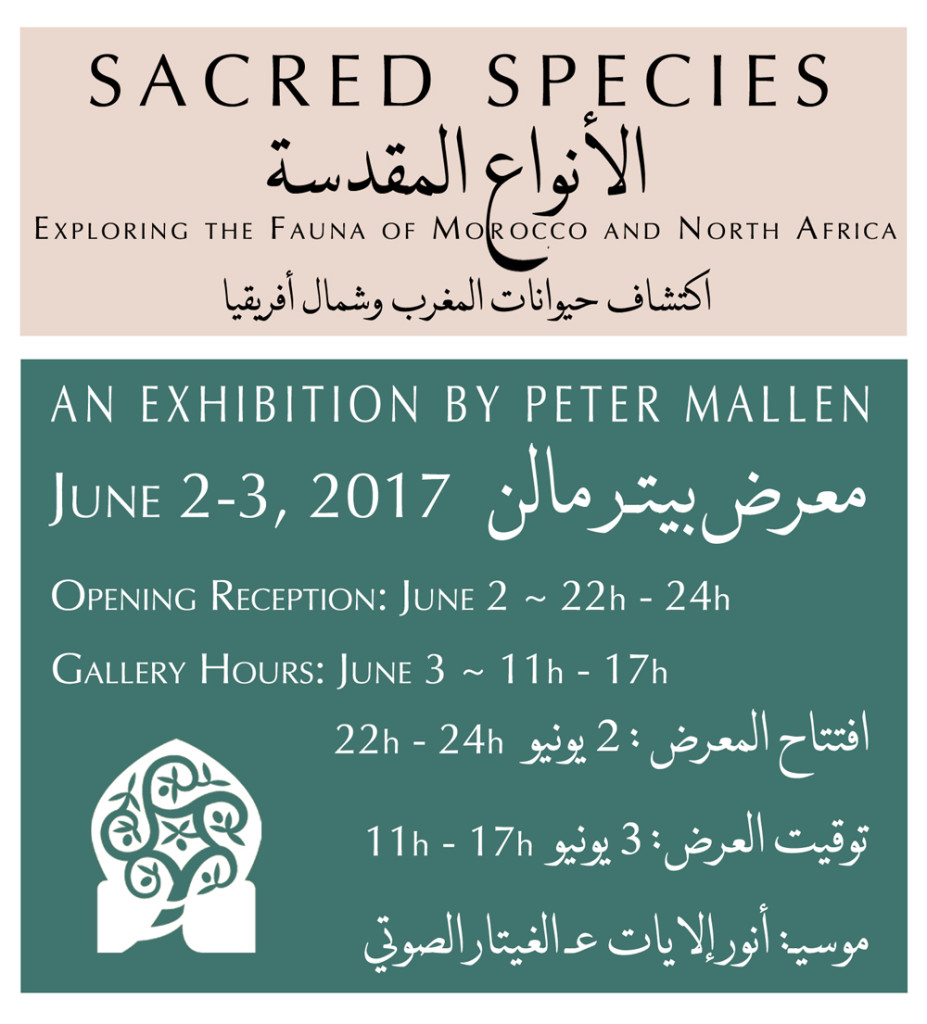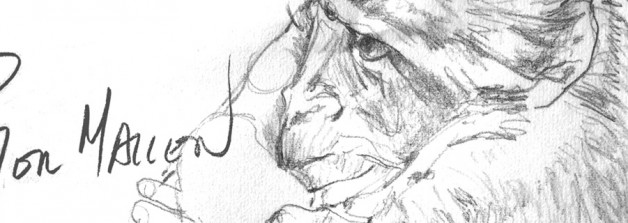May 2017 artist in residence, Peter Mallen, shares some thoughts with Green Olive Arts about the artworks he has been making this month. To see the whole series and hear from Peter Mallen himself, you are invited to his exhibition reception this Friday night June 2, from 10pm to midnight. He will also be present for gallery hours Saturday, June 3, from 11am to 5pm at Green Olive Arts in Tetouan.
A graduate of the University of New Hampshire with a degree in Painting & Graphics, Peter Mallen is an internationally exhibited artist based in the United States. In addition to his fine art pursuits, he has had a long and successful career as a Scientific Illustrator and Graphic Designer at the Schepens Eye Research Institute in Boston. He spends his time traveling the globe and practicing his craft.

GOA: Peter, can you tell us about the particular theme of Sacred Species with which you have titled this group of artworks?
PM: My interest in nature has been a lifelong passion. Throughout my journey, I have always been attentive to nature: observing plants and animals; working the soil and a garden; exploring new ideas and environments. A constant has been my involvement in the environmental movement: a diverse scientific, social, and political effort which attempts to address issues of ecology and to emphasize green policies. Of major importance to me is the issue of animal welfare and conservation.
 GOA: How has this theme led your studio time here in Morocco?
GOA: How has this theme led your studio time here in Morocco?
PM: Represented in this exhibition are works created in Tetouan which use as their subject fauna, particular to Morocco, to Africa, and to the world. The subjects are species threatened with, or, in danger of, extinction. The Bald Ibis, for example, is one of the Western Palearctic’s most enigmatic and endangered birds with only four breeding colonies. It survives only in Souss-Massa National Park in Morocco.
GOA: What influences you in the process as you create these pieces?
PM: This series of works on paper represents my long-term interest in exploring three-dimensionality and the surface of paper. The bas-relief technique refers to ancient stone carving traditions. My focus has been to explore the boundaries of surface, technique and abstraction. I am always open to cross-cultural influence, whether from the colors used by the artisans of Tetouan, or, from the abstracted elements of modern Japanese printmaking.

The process of paper making is, in itself, an expressive but structured technique which enables the control of medium from beginning to end. It also allows me to literally create “something” from “nothing”. The raw material for the paper is recycled cotton, so, the substance and the structure of the bas-relief is re-purposed and up-cycled. Adding precious metal to some of the pieces completes the transformation from “trash” to “treasure.”


